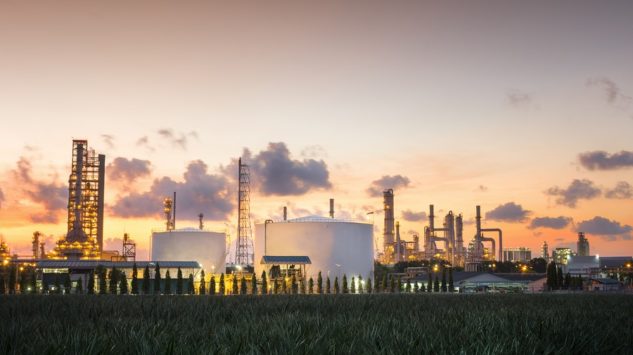Issue Briefs

America’s Energy Future
Paolo von Schirach
December 20, 2018
The good news is that America is now among the top three world fossil fuels producers. The bad news is that increased US fossil fuels production will create a disincentive in exploring and then deploying needed alternatives to fossil fuels.
The real challenge
The energy policy challenge for the US –both the government and the private sector–is to look at reliance on abundant domestic oil and gas as a “necessary evil”. Indeed, these are energy sources that we badly need right now. However, as we take advantage of the fossil fuels bonanza, we must be steadfast and relentless in the all out pursuit of emissions free energy alternatives. If we do not want to cook up the planet, our long term future has to be with clean energy sources.
The fracking revolution
That said, if you did not know anything about the immense threat represented by man-made global warming and therefore you had no reason to doubt that fossil fuels are the best answer to America’s massive energy needs, then you would be reassured by recent trends. Indeed, thanks to abundant domestic oil and gas, this is a great season for the American economy and for the US fossil fuels industry.
Thanks to hydraulic fracturing technologies, (better known as “fracking”), and horizontal drilling scores of US energy companies, large and small, in the last decade managed to tap into vast energy resources, (located mostly in Texas, Oklahoma, North Dakota, Louisiana, and Pennsylvania), until recently deemed to be uneconomic because of the technical challenges represented by drilling into shale formations in order to free up the hydrocarbons trapped in shale.
Well, thanks to old-fashioned Yankee ingenuity, the technical challenges were overcome –with spectacular results. Thanks to fracking, US oil and natural gas production jumped, this way transforming not just the American energy market, but the entire dynamics of global energy markets.
US is ahead
Let’s take stock. America is now the number one world producer of natural gas, and poised to surpass Russia as the biggest oil producer in 2019, having already overtaken Saudi Arabia. (This forecast may change, of course, because both Russia and Saudi Arabia have spare capacity that could be easily tapped, this way increasing their production).
A mere decade ago, the idea of a massive scale US fossil fuels renaissance would have been labeled a silly fantasy. Any reliable forecast would have pointed out that the US had used most of its known fossil fuels reserves.
In 2008 the consensus was that, going forward, America could have powered itself only via massive additional energy imports, (both oil for transportation and natural gas for power generation). This unpleasant assessment created unease in many quarters, given the enormous cost involved in importing most of the hydrocarbons needed to power America, the second largest energy consumer, (after China), and given the negative national security implications of utter dependence on foreign suppliers for such vital commodities.
The impact of fracking
Well, today we have a completely different scenario. While America continues to rely on some oil imports, the percentage has shrunk substantially. Furthermore, today the national security concerns are far less significant, because our oil imports come mostly from our close neighbors: Canada and Mexico, therefore these supplies are relatively secure. Which is to say that America is now close to achieving what the experts call “Hemispheric Energy Independence”. Indeed, as most of our additional energy needs come from the immediate neighborhood, we no longer rely on a significant scale on distant and potentially unreliable suppliers.
And it gets better. In fact, while we still import some oil, now we also export oil, and growing amounts of oil products. And the quantities of our exports are growing.
The real challenge is to develop emissions free energy sources
That said, this positive energy outlook is deceptive. This fossil fuels renaissance is not the end of the story when it comes to energy sources and their impact on the environment. We know that continued reliance –on a massive scale– on burning fossil fuels will contribute to additional greenhouse gases emissions and therefore to the exacerbation of global warming.
Of course, we know that many companies and scientists are busy trying to find workable –that is technologically viable and cost-effective– alternatives to reliance on hydrocarbons. But this is not easy.
Bad policies will not help
And it seems that policy-makers are approaching the problem in the wrong way. The prevailing policy choice is to “force” the adoption of currently available renewable energy solutions –today– by creating mandates for renewable energy usage, and tax subsidies for wind, solar and electric vehicles. In my view, while these policies of mandates and subsidies may be well intentioned, they will not succeed.
The fact is that new forms of energy production and new types of vehicles will be spontaneously adopted on a massive scale only once they prove to be cost-effective, without the distorting incentives of mandates and tax subsidies.
Fund more R&D
Public policy can help not via subsidies but by providing significantly more funding for additional research in alternative, emissions free, fuels. We simply do not know what the future ideal new energy mix will be. It is too early to say.
Electric vehicles look very promising. And yet manufacturers still need to find ways to make cheaper, more energy-efficient, and lighter batteries. The cost of wind and solar has gone down significantly. But we still do not have ways to store the electricity they produce so that it can be used when the wind is not blowing and the sun is not shining.
In other words, still plenty of work to do before we can reliably move away from hydrocarbons for both power generation and transportation.
Fast track the development of clean energy sources
So, here is the challenge for America. By all means, let’s take advantage of the incredible fossil fuels renaissance, simply because today there is no reliable alternative technology that could be deployed on a massive scale.
But let’s not fool ourselves. Oil and gas are not and should not be looked at as long term energy solutions. The long term solution has to be in emissions free, clean energy sources –whatever they may be. With this goal in mind, let us unleash American ingenuity so that we can get to a reliable, and economically viable post-fossil fuels era as soon as possible.
We all love our planet. Let’s do our best to preserve it.
 |
Paolo von Schirach is President of the Global Policy Institute and Professor of International Affairs and Economics at BAU International University www.bauinternational.com He is also the Editor of the Schirach Report www.schirachreport.com |
The views and opinions expressed in all issue briefs are those of the authors